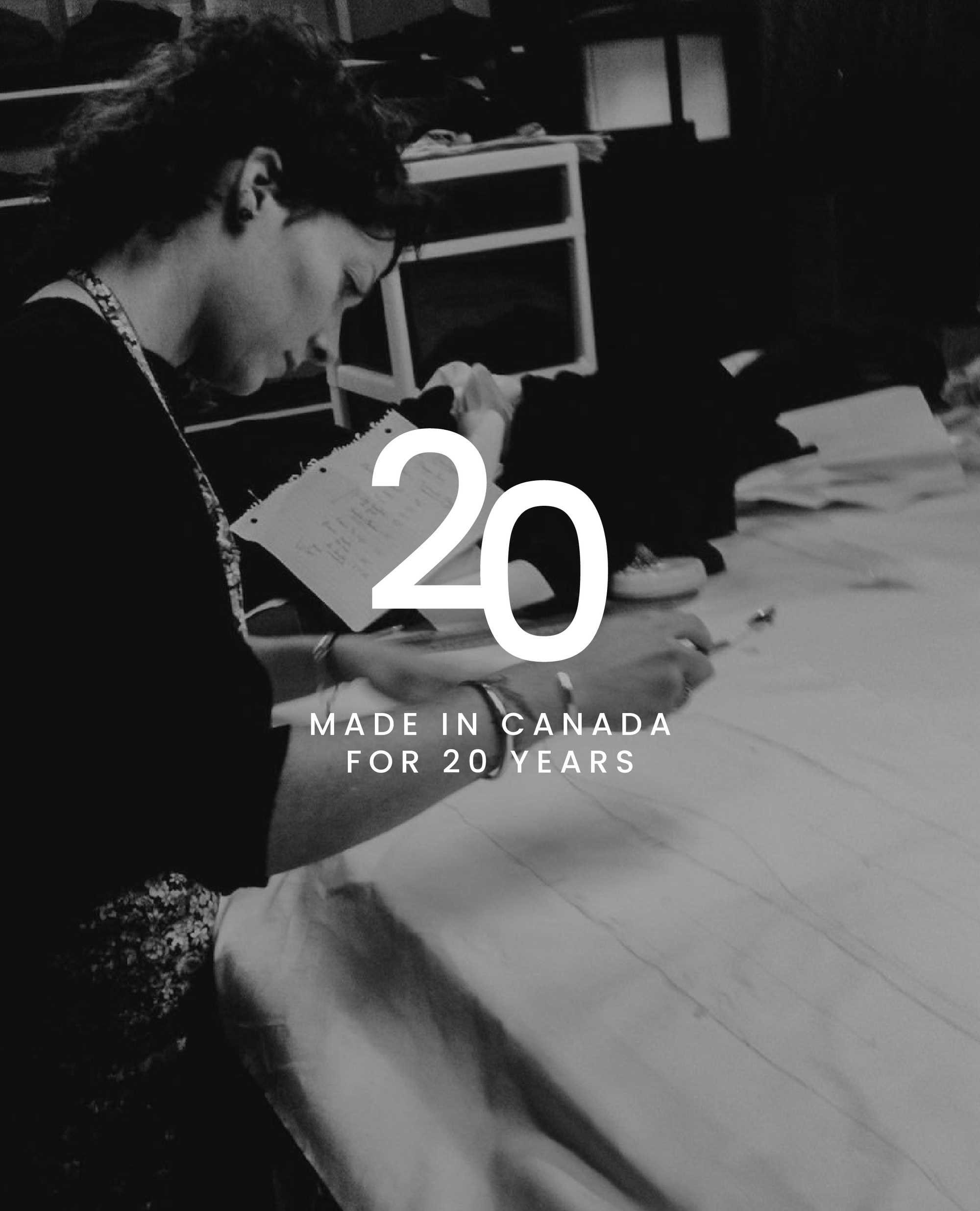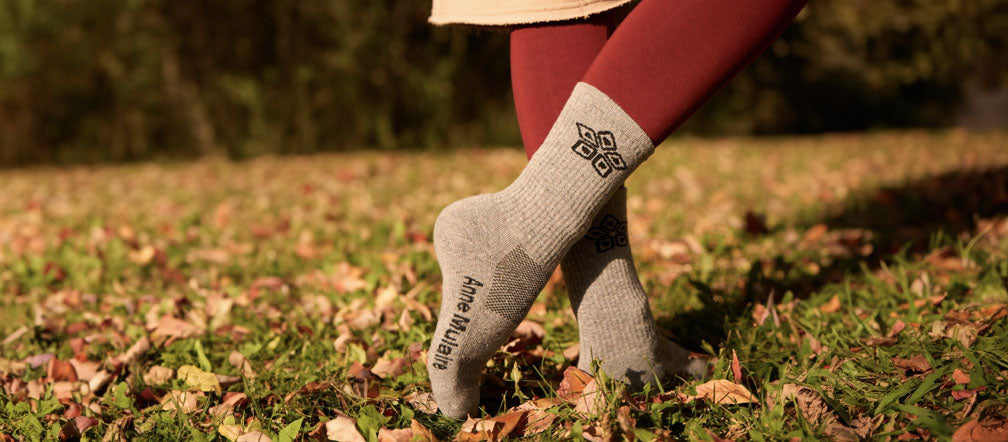Fast-fashion dominates social media, with trends changing as often and as quickly as the weather. Unfortunately, this fast-fashion world is often connected to low-quality products, unsustainable materials, and plenty of waste. In fact, an article from Earth.org states that the average consumer throws away 81.5 lbs of clothing every year, while the fashion industry produces 92 million tonnes of textile waste in a year. A transport truck only weighs about 40 tons and elephants up to 7—if that puts it into perspective.
Thankfully, there is a slower, long-lasting movement that is happening in the fashion world: Circularity. Circularity is changing the way we look at waste in fashion, and puts ownership not only on those purchasing clothing, but also on those producing it, to do so in a thoughtful way.
In this article, we’re covering what circular recycling actually is, how it applies to the fashion world, why it’s important, the role it plays in sustainability, and what changes buyers need to make to embrace the circular fashion movement.
What is Circular Recycling?
Circular recycling, often referred to as circularity, is a holistic approach to waste management that aims to reduce the environmental impact of products and materials.
Traditional product use is more linear: Items are made, sold, used, and discarded. Circular recycling is a closed-loop system. Products don’t ever become “waste”. Instead, they’re reused, repurposed, recycled, refurbished, or composted.
This also means that in a circular production process, materials must be selected because of their ability to actually be reused or repurposed. They’re more natural and tend to be less synthetic.
What is Circular Fashion?
Circular fashion is about taking the process and belief of circular recycling into the world of clothing and fashion. At its core, circular fashion aims to redefine the way we produce, consume, and dispose of clothing.
To produce fashion in a sustainable and circular way, companies must prioritize designing garments with durability, repairability, and recyclability in mind. They must think about how they’ll reuse scraps from designs, what types of materials and dyes they’ll put into their clothing, and what processes they have in place for consumers to recycle their own clothing once they are worn out, no longer fit, or are damaged.
Why is Circular Fashion Important?
Circular fashion is crucial for addressing the environmental and social challenges posed by the conventional fashion industry. The environmental impact of textile production, from water consumption to chemical pollution, is immense. Circular fashion offers a sustainable alternative by reducing the demand for new raw materials, minimizing waste, and decreasing the carbon footprint associated with manufacturing.
Additionally, circular fashion promotes ethical practices throughout the supply chain. From fair labor conditions to transparent sourcing, brands like Anne Mulaire prioritize the well-being of both people and the planet. By choosing circular fashion, consumers contribute to a more equitable and environmentally friendly industry.
Anne Mulaire and Circular Fashion
An Indigenous fashion brand with a deep belief in honoring the planet we share, circular fashion practices are at the core of how Anne Mulaire clothing is produced.
Not only is the clothing manufactured in Canada, by women who receive a working and fair wage, but every piece is made from natural fabrics grown without pesticides, herbicides, or chemical fertilizers.
Their Return to Nature initiative provides multiple ways for clothing to be repurposed and recycled. Anne Mulaire partners with many institutions – like the University of Manitoba – to further the research into circular fashion. One of these projects is to research the biodegradability of their fabrics.
You can learn more about their sustainability practices here.
The Roles of Circularity in Sustainability
Circularity plays a key role in advancing sustainability within the fashion industry.
Resource Conservation
Circular fashion reduces the search for new materials or resources to make new clothing. It focuses on what we already have, and how we can use existing materials and resources completely. This mindset not only reduces the environmental impact the industry has, but also conserves precious resources like water and energy.
That’s right — fashion isn’t just about cotton or bamboo or physical material. Water, electricity, gas, metal plastic and other materials are all impacted by the excess waste in the fashion industry. Conservation flows right down from top to bottom.
Waste Reduction
As we said at the beginning, the traditional fashion industry and fast-fashion boom generate literal tonnes of waste. It fills our landfills and helps to pollute our planet.
Circular fashion aims to close the loop by making sure that garments are repurposed or recycled at the end of their life. The garments are also usually higher quality, meaning they last longer and are less likely to be thrown away. All of this reduces waste.
Extended Product Lifespan
This movement challenges the fast-fashion and quick-trend industry. Instead, durable and timeless pieces that withstand changing trends reign supreme.
Community Engagement
Brands committed to circularity often engage with local communities, fostering a sense of social, cultural and environmental responsibility. Anne Mulaire's dedication to honoring Canada's diverse history is an example of how these two seamlessly blend each other.
Shopping Circular Fashion: How to Make the Change
Circular fashion is not merely a trend but a transformative movement that holds the key to a sustainable future for the fashion industry. But, at the end of the day, it’ll only grow if buyers are aware of it and shop purposefully.
The first thing you can do is research. As a buyer, it’s up to you where you spend your money. Now that you know about circular fashion, seek it out; Look on brands’ websites to see if they have any mention about their material recycling or reuse process. If you want to shop a Canadian brand that leans into the circular movement, then Anne Mulaire is a great place to start.
Adjust your expectations about price. This type of clothing is slower, higher quality, and made with small-batch in mind. That means that the price point is higher. It can be hard to spend more on clothing when you’re used to cheaper options, but it makes a huge difference.
Start small. Updating or replacing your entire wardrobe can be a lot. Try buying one piece of stable clothing that is made with circular sustainable practices in mind. A staple item could be a pair of leggings, a cozy sweater, or a classic pair of pants. See how much longer they last, how you can feel the difference in quality.







